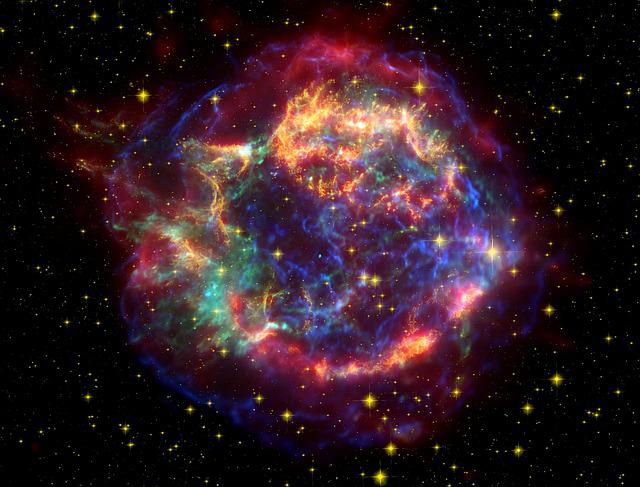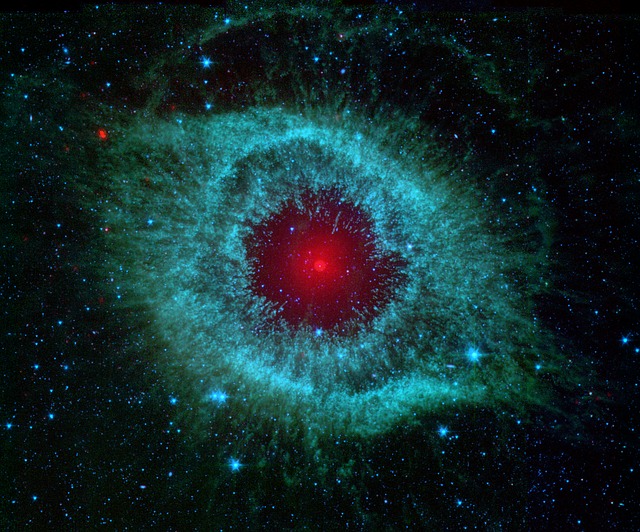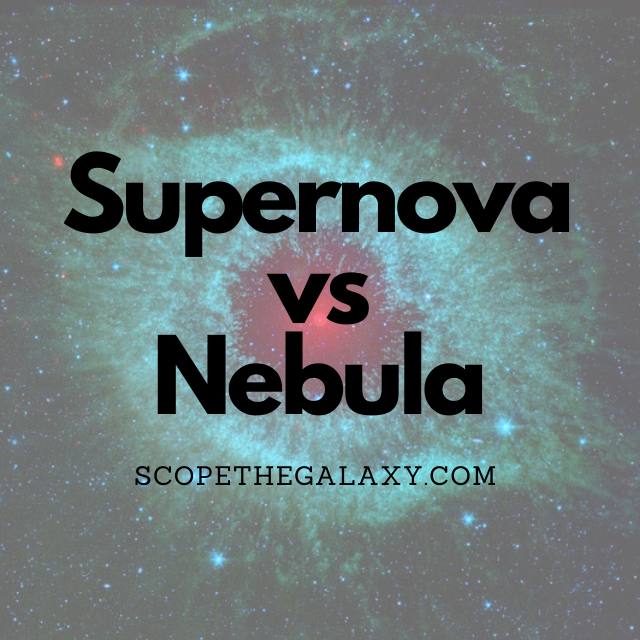*This post may contain affiliate links. This means we may make a commission if you purchase an item using one of our links*
The main difference between a nebula and a supernova is that supernovae are formed when larger stars around 8+ solar masses or 1.44 solar mass white dwarf explodes, whereas nebulae are the dust cloud remnants of all dying stars (made mostly of hydrogen and helium) that are scattered across space and able to create new stars.
There are a variety of other differences between the two interstellar entities so, continue reading if you want a more detailed breakdown on supernovae and nebulae.
What Is A Supernova?
Table of Contents

Black holes are what remains after a supernova explosion occurs, which in turn means that this explosion is the process followed when a star explodes.
It will then be classified as a type 1 supernova if it leaves no hydrogen line emissions in the spectra and type 2, which would be an explosion roughly 15 times the mass of our Sun, producing hydrogen line emissions in the process.
There are two ways that a supernova explosion can form.
It can either be via a white dwarf in a binary star system that accumulates too much energy from its companion star causing it to explode or when a larger star runs out of nuclear fuel and collapses under its own gravity, leaving behind the bright and grandiose remnants of this explosion many times brighter than even its own galaxy.
As stated above supernovae are generally split into 2 types, a type 1 supernova or a type 2. Type 1’s are then further split into 1 of 3 subcategories, whether Ia, Ib or Ic.
A type 1a supernova is the most commonly observed in outer space and acts like a candle light to help us observe distance across the deep unknown.
These are theorised to form after a white dwarf, likely in a binary star system, exploding due to the over consumption of energy from its companion. Type Ia’s have a strong silicon absorption line near its maximum luminosity whilst producing no hydrogen at the same time.
Type Ib’s are formed after a large star collapses under its own core gravity where the outer region of the stars hydrogen is stripped away, leaving behind only second layer of helium.
Type Ic’s lack both the hydrogen and helium layer when they explode, although the difference here has been debated as not being significant enough to differentiate a type Ib from a Ic.
Type 2 supernovae are formed when a star between 8 – 50 times the Sun’s mass collapses into itself and causes a huge explosion either producing a neutron or a black hole if the materials left behind exceed 3 – 4 solar masses.
In essence anything above 20 times the size of our Sun can potentially result in a black hole, whilst a star that is 1.44 solar masses or between 10 – 20 times the mass of our Sun would produce a neutron star instead.
What Is A Nebula?

A nebula is a giant gas and dust cloud which can be observed in outer space. They are either present when forming new stars or when a supernova explosion occurs, leaving behind this dust cloud remnant.
There are other less violent ways nebulae are formed but, in most instances they form once a star is about to die.
Just like the components of their dead star counterparts these dust clouds will be made out of the elements hydrogen, helium and a number of other ionised elements spread across their local region of space.
Therefore, based on this fact and how stars are mostly comprised of those two core elements, stars can be formed when dust cloud surroundings clump together.
When stars are being formed, the dust clouds will start to clump together, making the gravity around these regions stronger and drawing even more dust clouds towards itself.
This process essentially occurs until the gravity becomes so intense that it causes the clumped dust clouds to collapse into itself.
The dust in the center will star heating up producing the first phase of a new star, called a protostar and from there will become either a main sequence star like red dwarfs, yellow dwarfs (like our Sun) among other variations.
They can also become a failed brown dwarf star too if everything doesn’t go to plan.
Nebulae don’t live for an extreme amount of time in space where planetary nebulae like the helix nebula for example is projected to last for around 20,000 years near its top end.
Does A Supernova Create A Nebula?
Yes, supernova explosion do create nebulae however, these violent explosions are not absolutely necessary for these giant dust clouds to form.
As long as a star is dying, hydrogen and helium based nebula will continue to form after they’ve entered their stellar remnant phase.
Similarities Between A Supernova And Nebula
Nebula and supernova are both the outcome of a star that has essentially died where one is the grandiose explosion and the other the dust cloud remnants of the explosions or in most cases the dust cloud remnants of a smaller mass star like a yellow dwarf.
Other than that, there isn’t much that is similar between the two.
Differences Between A Supernova And Nebula
As for the differences between supernova explosions and nebulae, they include the following:
- Supernovae are grandiose violent explosions of larger stars or white dwarfs, that are able to outshine entire galaxies whilst nebulae aren’t explosion or as bright.
- Planetary nebulae can last for around 20,000 years whilst supernova explosion will last, for at most, a few months.
- Supernova explosions can be upwards of 1 billion degrees Celsius in temperature whilst nebula are far cooler at around 10,000°C.
- Supernova are explosions whilst nebulae are dust clouds.
- Nebulae can create stars whilst supernovae cannot.
- A nebula can be formed even when normal smaller stars die whilst supernova explosions require stars that are 8+ solar masses or white dwarfs that are 1.44 solar masses to occur.
- Specific nebulae like planetary nebula can only form when a low mass star dies (like the helix nebula).
Summary
Supernova explosions create nebulae but they don’t form all nebulae as larger stars aren’t the most abundant entities in universe. As a result most lower mass stars like the Sun will shed the weight in a far gentler manner, going through the process of a planetary nebula.
Either way, both phenomena are created when a star is dying therefore, supernovae will almost always leave behind a giant dust cloud (mostly consisting of hydrogen and helium) as supernovae require stars to essentially die before it can occur.

